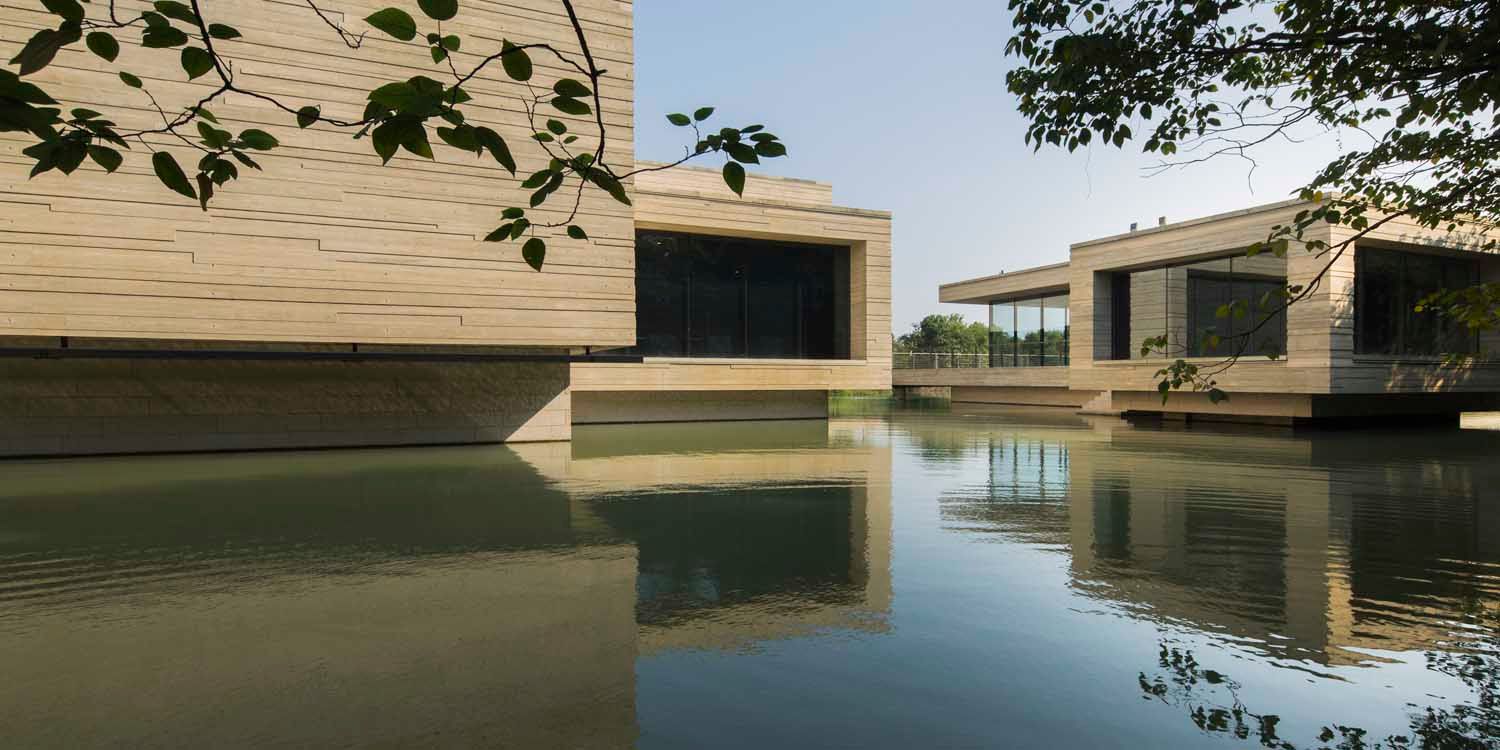Trained at Cornell and M.I.T., followed by an stretch in I. M. Pei’s office, architect Hiroshi Okamoto split off a decade ago to set up OLI Architecture.
One of the firm’s first projects was the Mu Xin Art Museum in the historic water town of Wuzhen, in China’s northern Zhejiang Province.
It’s dedicated to the life, art, and writing of Mu Xin, a 20th-century Renaissance man known for studying both Eastern and Western philosophies. “In the 1980s when the Chinese diaspora came and artists went to Queens, Mu Xin was their mentor,” Okamoto says. “They subsequently went back and wanted to celebrate him, but he was not recognized for his art during the Cultural Revolution.”
Mu Xin was incarcerated, but continued to draw and write, hiding his work – like letters to Tolstoy, to keep himself sharp – in his prison garb. “He became famous for his short stories and epics that were published in Taiwan,” he says. “He had a countercultural and intellectual appeal to the younger generation – especially after he died.”
As did his home town, which had come to appreciate the economic power of tourism. “There was a launch of cultural events and the canal town was rehabilitated,” he says. “On the edge of it they built a theater and a conference center and a global Internet center.”
The Mu Xin Museum was the cultural component and assigned to Okamoto, who was fortunate to meet the artist before he died. “We went to his studio and he showed us how he created his art on this wooden table,” he says. “So we re-created that experience, where people can relive his life, one on one.”
That’s only one of a series of experiences inside the 72,000 square-foot museum with five permanent galleries. Its intersecting spaces offer displays of Mu Xin’s writings, paintings, and abstract landscapes.
“We wanted to create experiences within the museum where you can connect with his literature and writing,” he says. “One gallery is with his books, one is with his art – and each room has a separate subject and each has different editorial content.”
Each also opens out to views of courtyards and the canal on which the museum is sited. That’s right – it sits on a canal that was drained to build the three-story museum, its lower level – or 60 percent of its total square footage – now underwater. Once the museum was completed, the canal was refilled for maximum experiential impact, inside and out. “You’re free to roam through and get glimpses of the canal,” he says. “We slowed the speed down so visitors can create their own experiences.”
The architects looked to the artist’s landscape drawings for inspiration, struck by both his attention to scale and to detail. Then they got to work in a gray architectural concrete, with pine accents. That wood was chosen for a compelling reason. “Mu Xin is his pen name,” he says. Mu is wood, and Xin is heart.”
When they met with the artist, he told them not to be afraid of making mistakes. “He was pretty cheeky – he was very insightful and had a great sense of humor that was a little dark,” he says. “He was observant of his own life and his own foils.”
And because he was interested in philosophies from both the East and the West, the architects looked at him as a bridge between the two cultures.
The end result is a museum with a distinctively Western and contemporary look, but one that celebrates the life and work of a now-famous Eastern aesthete.
For more, go here.
[slideshow id=2243]

